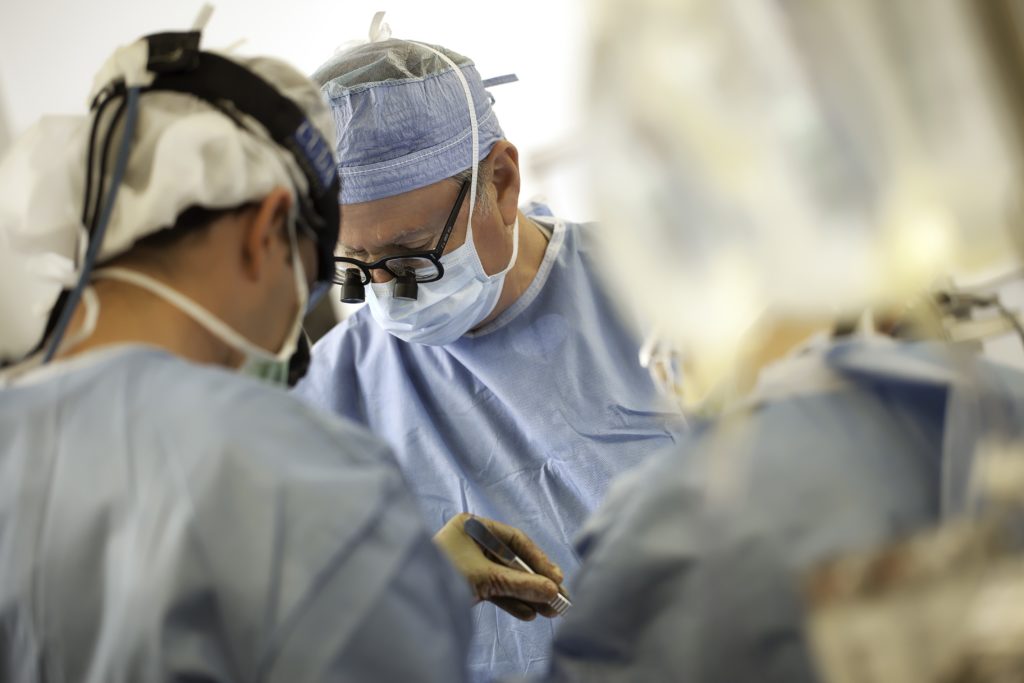
Here you can see pig lungs being ventilated on a device called “ex vivo lung perfusion.” EVLP, as it’s commonly known, is used to assess human lungs prior to transplant. We’re lucky to be one of the places in the country that can offer it for transplant patients. But we’re also exploring its potential to do more. Our lung transplant research program is investigating how EVLP could be paired with a promising drug to rehab damaged donor lungs that now must be discarded. That could cut down the wait list for lung transplants dramatically, which would be wonderful news for people who need a transplant. “We envision UVA as eventually becoming a lung rehab center where donor lungs would arrive to undergo EVLP and, if they look great, they can be sent out to the appropriate hospital for transplant,” said researcher Victor Laubach, PhD, who is working on the project with transplant surgeon Irving Kron, MD.

That’s just one aspect of our major lung research effort, an effort that has recently received a whopping $8.6 million in grants from the National Institutes of Health. Kron and Laubach also are developing a new molecular imaging technique to detect post-surgery complications much sooner. Right now, surgeons have very limited means to do this. They take chest X-rays, for example, but X-rays don’t detect inflammation. They just show if the lungs are filling with fluid — a very bad sign. Laubach and Kron are working on a new technique that would represent a quantum leap forward. It would rapidly detect ischemia-reperfusion injury after transplant. IR injury is injury is a potentially deadly condition in which the lungs are damaged by preservation and subsequent restoration of blood flow. Detecting IR injury early would let doctors to intervene much sooner, and that could be the difference between life and death for transplant recipients.

Also in the works: Our Christine Lau, MD, has launched a clinical trial testing whether the drug regadenoson, which is already used in heart imaging, can prevent IR injury in lung-transplant recipients. Right now, the trial is in stage 1, which tests the drug’s safety in people who receive donated lungs. If that goes well, we’ll move to a larger, stage 2 trial looking at its effectiveness for that purpose and further evaluating its safety. This is very cool for us, as this trial is built on years of lab work by Dr. Laubach. It’s quite a treat for him to see his research move out of his lab and into people.
Finally, we have a recent arrival, Sasha Krupnick, MD, who is doing some very cool work to decrease or eliminate the need for transplant recipients to take drugs to suppress their immune systems so that their bodies don’t reject the transplant. That could be life-changing for lung recipients. Let’s wish him, Dr. Laubach, Dr. Kron and Dr. Lau the best of luck. May their work revolutionize the field of lung transplantation.

how much coast for lung transplantation in Bangladesh?
I’m afraid I don’t know that information. Best to check with the local hospitals.